Novel Planar Ultra-Wideband Modular Antenna Array with Low Profile
Abstract
:1. Introduction
2. Structure of the Proposed PUMA
3. Measurements and Validation
4. Conclusions
Author Contributions
Funding
Data Availability Statement
Conflicts of Interest
References
- Fontana, R.J. Rencent sytem application of short-pulse ultra-wideband technology. IEEE AE Syst. Mag. 2004, 59, 2087–2104. [Google Scholar]
- Robert, F.; Aitan, A.; Edward, R. Recent advancs ultra-wideband communications systems. In Proceedings of the IEEE Conference on Ultra Wideband Systems and Technologies, Reston, VA, USA, 16–19 November 2003; IEEE: Piscataway, NJ, USA, 2003; pp. 803–817. [Google Scholar]
- Tavik, G.C.; Hilterbrick, C.L.; Evins, J.B.; Alter, J.J.; Crnkovich, J.G.; de Graaf, J.W.; Hagewood, S.M. The advanced multifunction RF concept. IEEE Trans. Microw. Theory Rechn. 2005, 53, 1009–1020. [Google Scholar] [CrossRef]
- Wu, W.; Xu, K.; Chen, Q.; Tanaka, T.; Kozai, M.; Minami, H. A wideband reflectarray based on single-layer magneto-electric dipole elements with 1-bit switching mode. IEEE Trans. Antennas Propag. 2022, 70, 1. [Google Scholar] [CrossRef]
- Gibson, P.J. The vivaldi aerial. In Proceedings of the 9th European Microwave Conference, Brighton, UK, 17–20 September 1979; IEEE: Piscataway, NJ, USA, 1979; pp. 101–105. [Google Scholar]
- Logan, J.T.; Kindt, R.W.; Vouvakis, M.N. A 1.2–12 GHz sliced notch antenna array. IEEE Trans. Antennas Propag. 2018, 66, 1818–1826. [Google Scholar] [CrossRef]
- Knorr, J.B. Slot-line transitions. IEEE Trans. Microw. Theory Tech. 1974, 22, 548–554. [Google Scholar] [CrossRef]
- Kindt, R.W.; Taylor, D. Polarization correction in dual-polarized phased arrays of flared notches. In Proceedings of the IEEE Antennas and Propagation Society International Symposium, Spokane, WA, USA, 3–8 July 2011; IEEE: Piscataway, NJ, USA, 2011; pp. 1961–1964. [Google Scholar]
- Wheeler, H. Simple relations derived fom a phased-array antenna made of an infinite current sheet. IEEE Trans. Antennas Propag. 1965, 13, 506–514. [Google Scholar] [CrossRef]
- Hansen, R.C. Current induced on a wire: Implications for connected arrays. IEEE Antennas Wirel. Propag. Lett. 2003, 2, 288–289. [Google Scholar] [CrossRef]
- Thors, B.; Steyskal, H.; Holter, H. Broad-band fragmented aperture phased array element design using genetic algorithms. Trans. Antennas Propag. 2005, 53, 3280–3287. [Google Scholar] [CrossRef]
- Munk, B.A. Finite Antenna Arrays and FSS; John Wiley & Sons: Hoboken, NJ, USA, 2003. [Google Scholar]
- Jones, M.; Rawnick, J. A new approach to broadband array design using tightly coupled elements. In Proceedings of the IEEE Military Communications Conference, Orlando, FL, USA, 29–31 October 2007; IEEE: Piscataway, NJ, USA, 2007; pp. 1–7. [Google Scholar]
- Doane, J.P.; Sertel, K.; Volakis, J.L. A wideband, wide scanning tightly coupled dipole array with integrated balun (TCDA-IB). IEEE Trans. Antennas Propag. 2013, 61, 4538–4548. [Google Scholar] [CrossRef]
- Yetisir, E.; Ghalichechian, N.; Volakis, J.L. Ultrawideband array with 70° scanning using FSS superstrate. IEEE Trans. Antennas Propag. 2016, 64, 4256–4265. [Google Scholar] [CrossRef]
- Zhong, J.; Johnson, A.; Alwan, E.A.; Volakis, J.L. Dual-linear polarized phased array with 9:1 bandwidth and 60° scanning off broadside. IEEE Trans. Antennas Propag. 2019, 67, 1996–2001. [Google Scholar] [CrossRef]
- Zhang, H.; Yang, S.; Xiao, S.W.; Chen, Y.; Qu, S.W.; Hu, J. Ultrawideband phased antenna arrays based on tightly coupled open folded dipoles. IEEE Antennas Wirel. Propag. Lett. 2019, 18, 378–382. [Google Scholar] [CrossRef]
- Tzanidis, I.; Sertel, K.; Volakis, J.L. UWB low-profile tightly coupled dipole array with integrated balun and edge terminations. IEEE Trans. Antennas Propag. 2013, 61, 3017–3025. [Google Scholar] [CrossRef]
- Holland, S.S.; Schaubert, D.H.; Vouvakis, M. A 7–21 GHz dual-polarized planar ultrawideband modular antenna (PUMA) array. IEEE Trans. Antennas Propag. 2012, 60, 4589–4600. [Google Scholar] [CrossRef]
- Holland, S.S.; Vouvakis, M.N. The planar ultrawideband modular antenna (PUMA) array. IEEE Trans. Antennas Propag. 2012, 60, 130–140. [Google Scholar] [CrossRef]
- Logan, J.T.; Kindt, R.W.; Lee, M.Y.; Vouvakis, M.N. Planar Ultrawideband Modular Antenna (PUMA) Arrays Scalable to mm-Waves. In Proceedings of the 2013 IEEE Antennas and Propagation Society International Symposium, Orlando, FL, USA, 7–12 July 2013; IEEE: Piscataway, NJ, USA, 2013; pp. 624–625. [Google Scholar]
- Lee, M.Y.; Logan, J.T.; Kindt, R.W. Simplified design of 6:1 PUMA arrays. In Proceedings of the 2015 IEEE International Symposium on Antennas and Propagation & USNC/URSI National Radio Science Meeting, Vancouver, BC, Canada, 16 January 2015; IEEE: Piscataway, NJ, USA, 2015; pp. 2515–2516. [Google Scholar]
- Logan, J.T.; Kindt, R.W.; Lee, M.Y.; Vouvakis, M.N. A new class of planar ultrawideband modular antenna arrays with improved bandwidth. IEEE Trans. Antennas Propag. 2018, 66, 692–701. [Google Scholar] [CrossRef]
- Hansen, R.C. Phased Array Antennas; John Wiley & Sons, Inc.: Hoboken, NJ, USA, 1998. [Google Scholar]
- Mailloux, R.J. Phased Array Antenna Handbook; Artech House: New York, NY, USA, 2005. [Google Scholar]
- Visser, H.J. Array and Phased Array Antenna Basics; John Wiley & Sons, Inc.: Hoboken, NJ, USA, 2005. [Google Scholar]
- Vouvakis, M.N.; Schaubert, D.H. Vivaldi antenna arrays. In Frontiers in Antennas: Next Generation Design & Engineering; Gross, F.B., Ed.; McGraw-Hill: New York, NY, USA, 2011. [Google Scholar]
- Pozar, D.M. The active element pattern. IEEE Trans. Antennas Propag. 1994, 42, 1176–1178. [Google Scholar] [CrossRef]
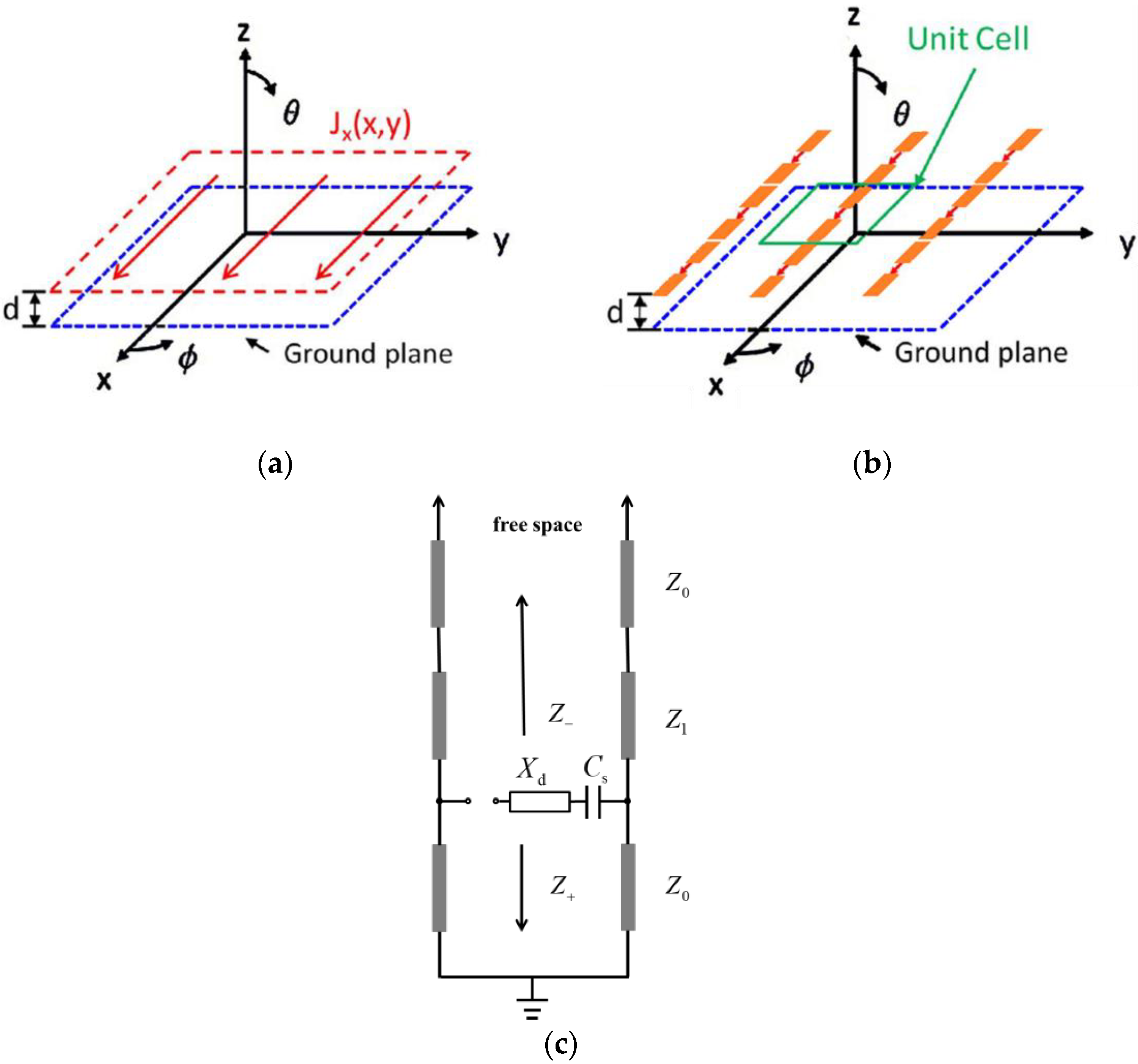

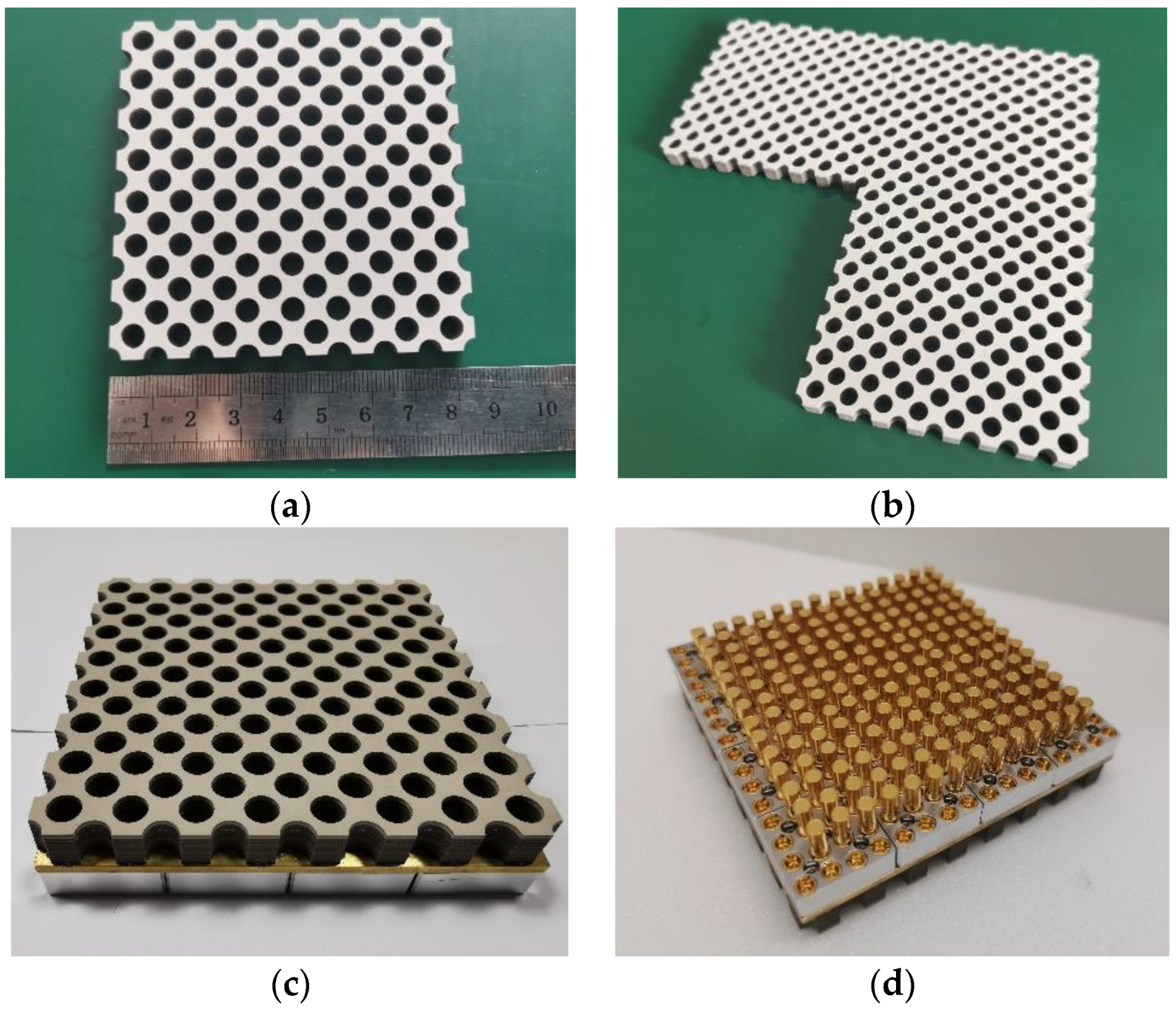

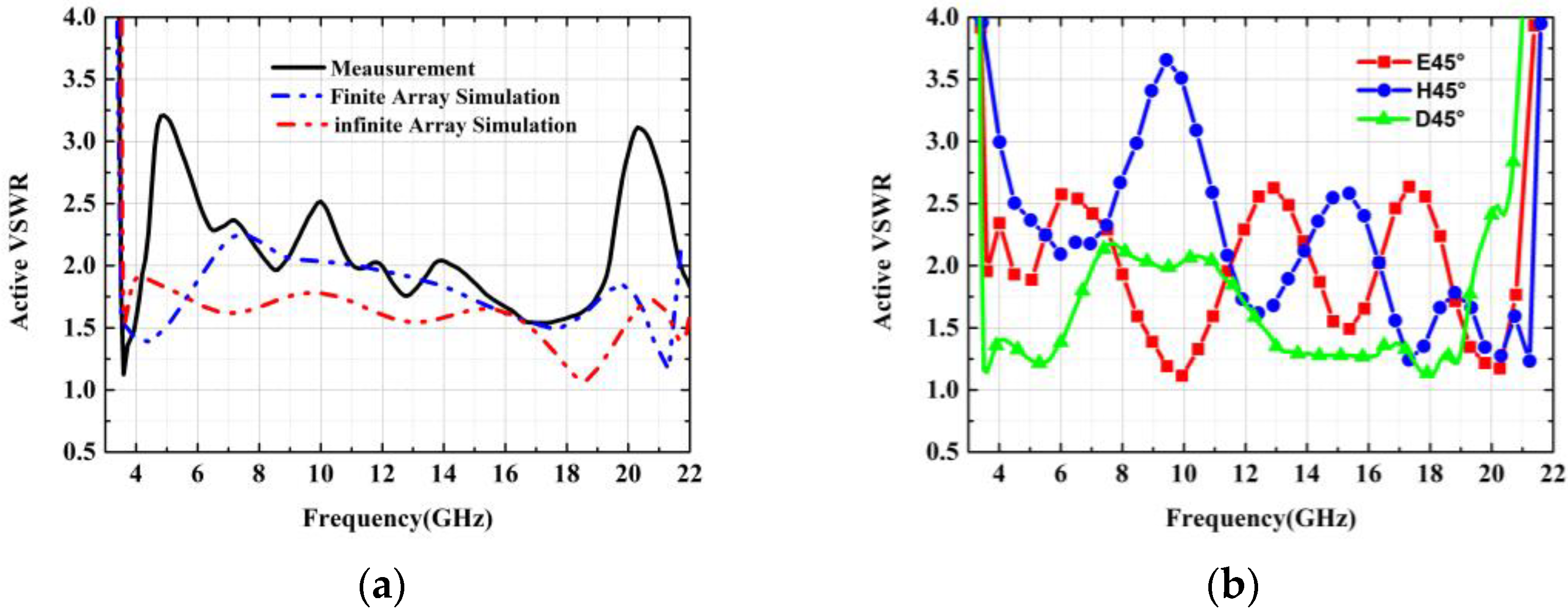

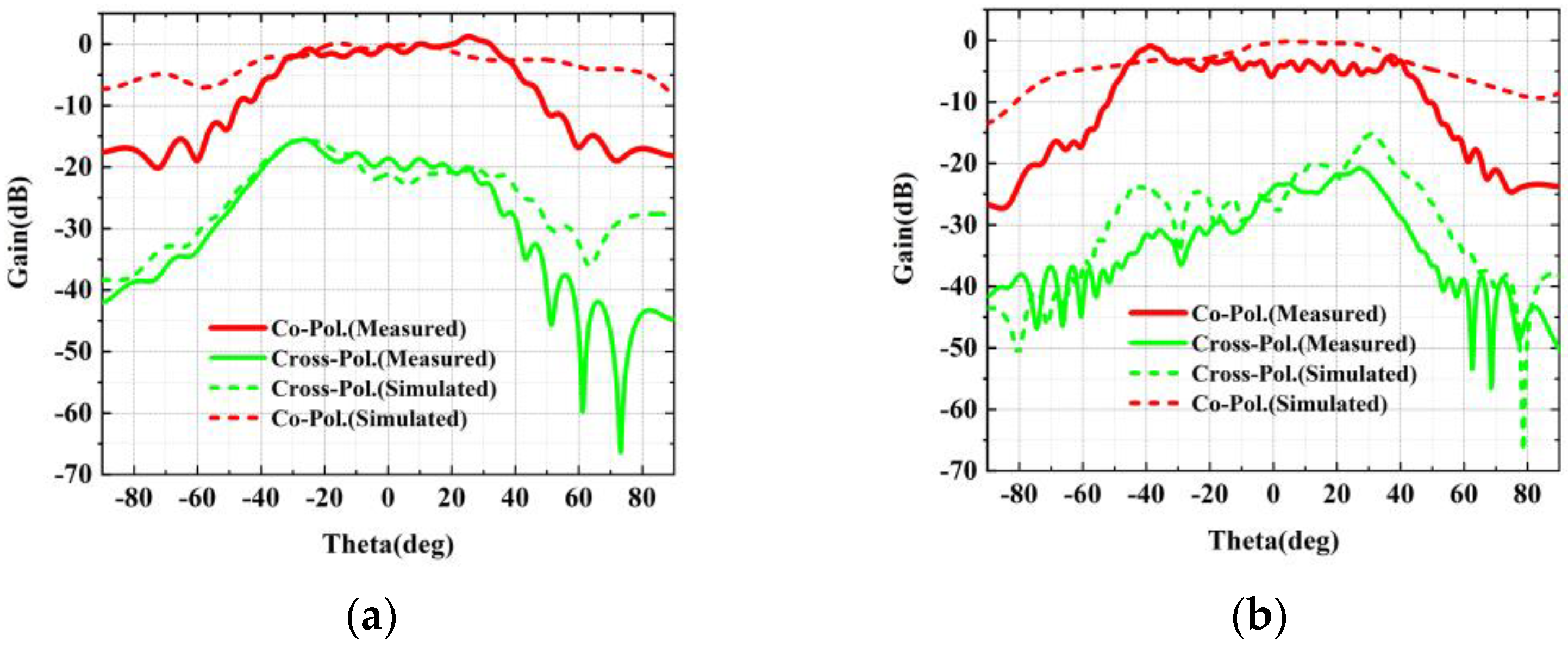
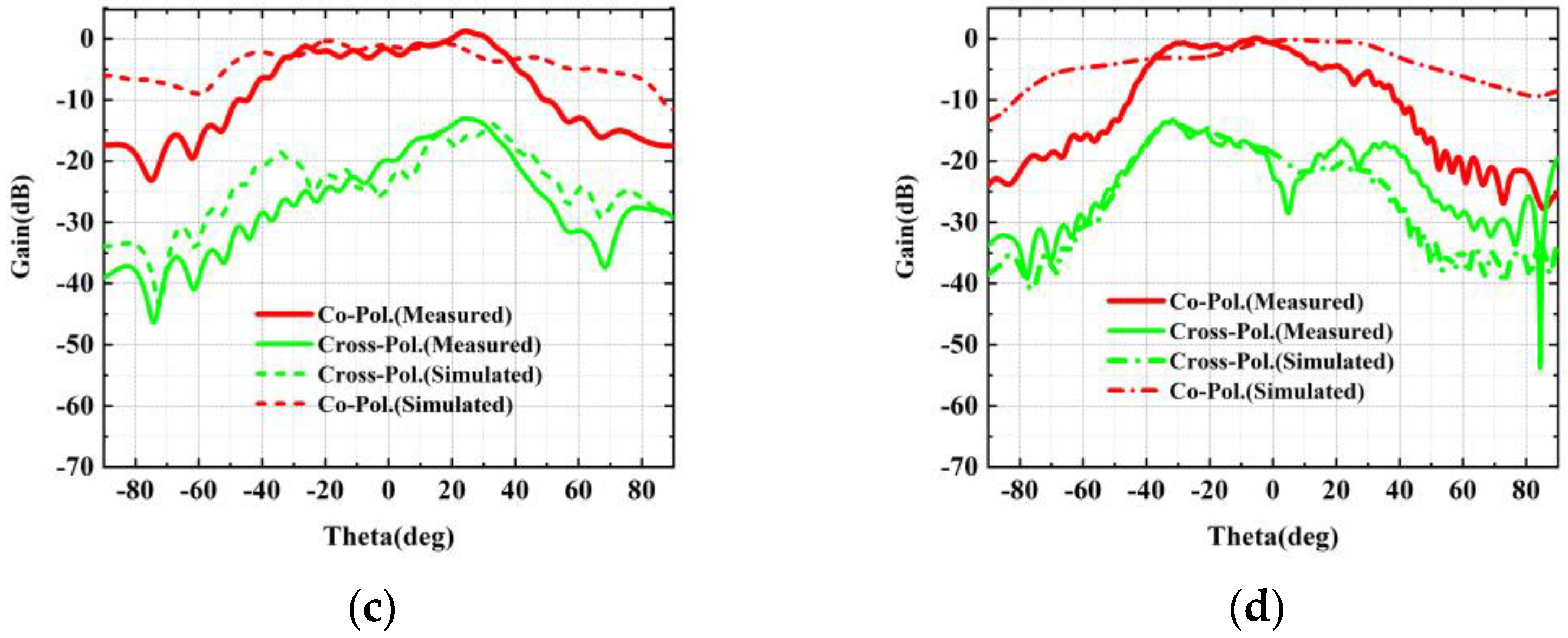
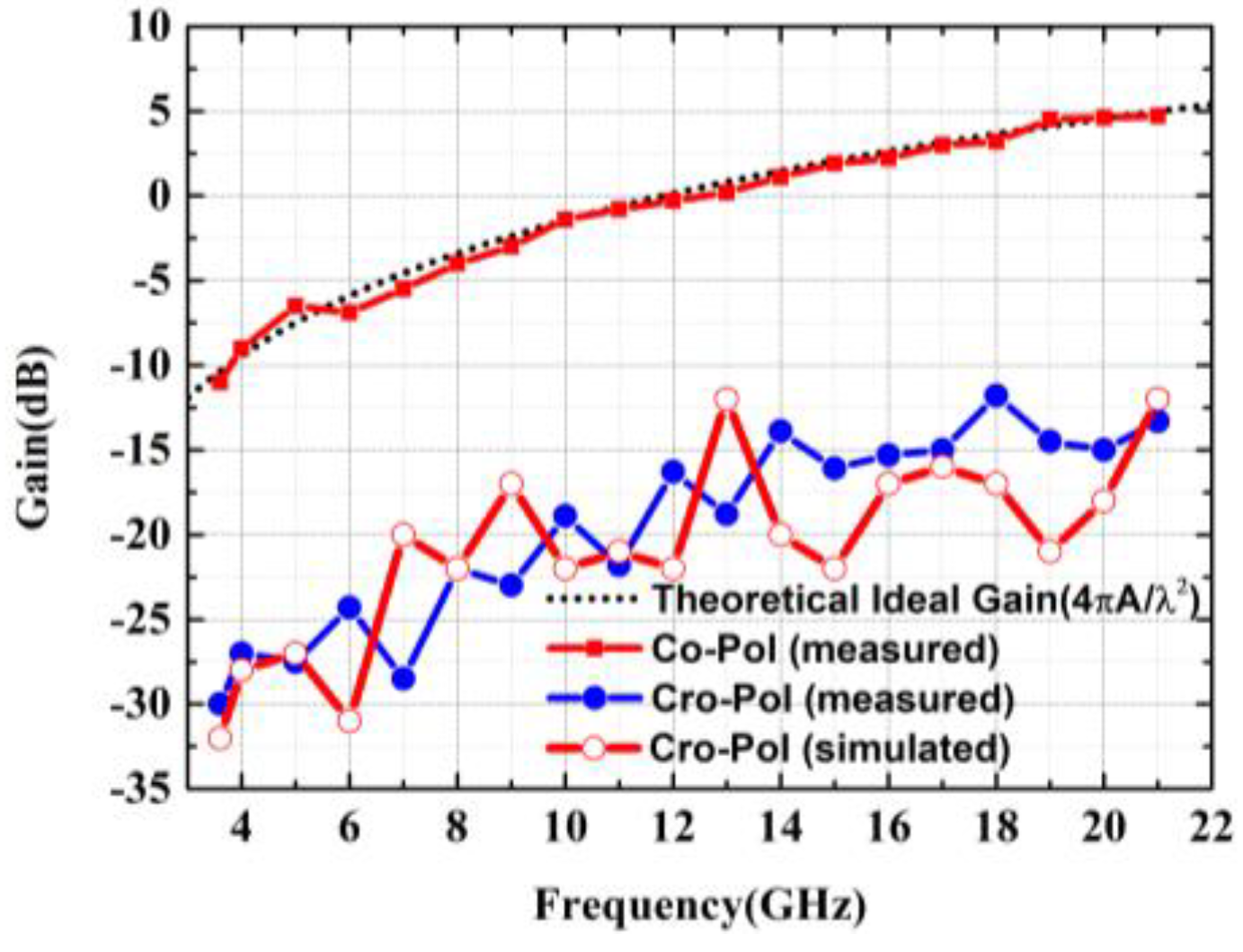


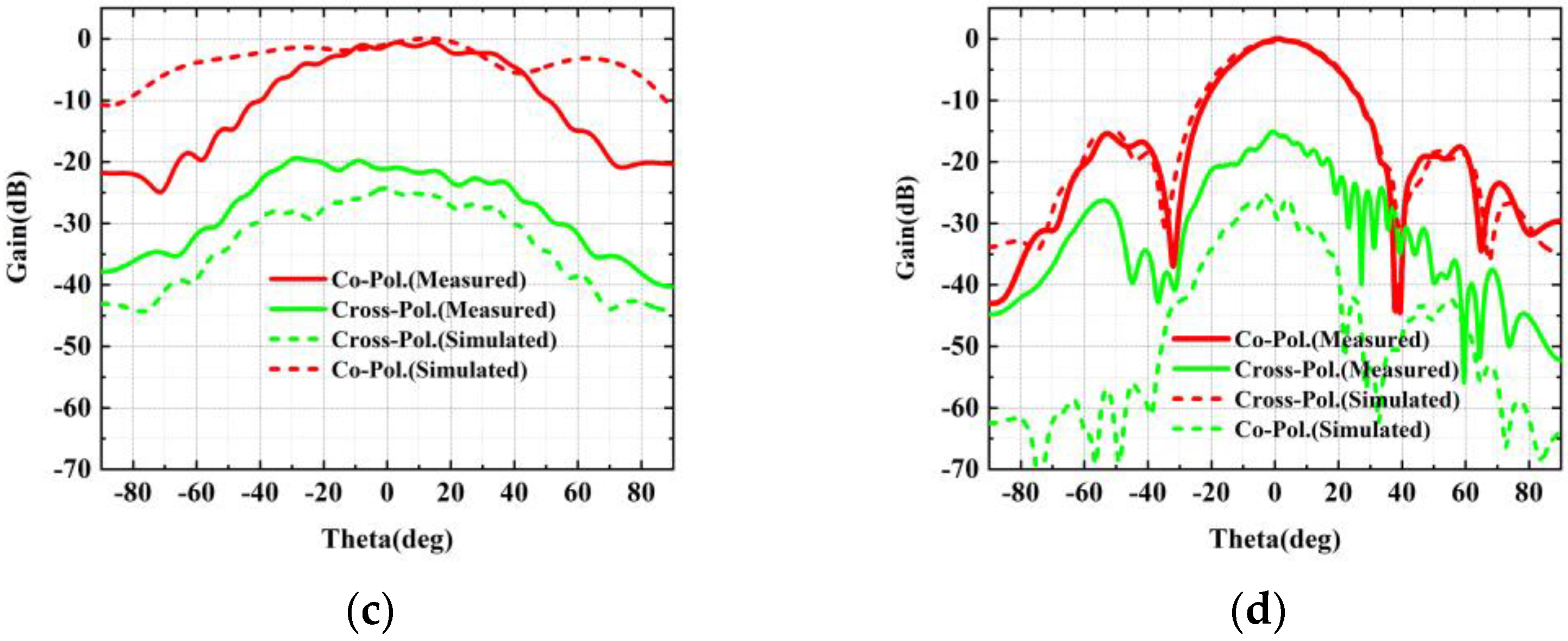

| Parameters | Dx/Dy | Dz | Rd | t1 | t2 | t3 | t4 |
|---|---|---|---|---|---|---|---|
| Values (mm) | 7.15 | 6.558 | 2.74 | 0.889 | 1.016 | 2.54 | 0.762 |
| Parameters | t5 | tb | td | g | L1 | L2 | L3 |
| Values (mm) | 0.889 | 0.066 | 0.098 | 0.0762 | 2.374 | 3.547 | 0.806 |
| Parameters | L4 | W1 | W2 | W3 | W4 | dp | df |
| Values (mm) | 1.979 | 0.539 | 2.059 | 0.767 | 1.603 | 1.651 | 0.762 |
| Parameters | c1 | c2 | c3 | tBT | Sx, Sy | tMB | d1 |
| Values (mm) | 0.1016 | 1.580 | 1.389 | 0.178 | 0.287 | 1.905 | 0.508 |
| Parameters | d2 | RC | tR | ||||
| Values (mm) | 2.184 | 0.4 | 0.017 |
| Dielectric Parameters | εr1 | εr2 | εr3 | εr4 | εr5 | εrb | εrxf |
|---|---|---|---|---|---|---|---|
| Permittivity | 6.15 | 2.2 | 2.2 | 1.96 | 1.96 | 2.8 | 2.08 |
| Tangent loss | 0.002 | 0.0019 | 0.0019 | 0.0019 | 0.0019 | 0.002 | 0.001 |
Publisher’s Note: MDPI stays neutral with regard to jurisdictional claims in published maps and institutional affiliations. |
© 2022 by the authors. Licensee MDPI, Basel, Switzerland. This article is an open access article distributed under the terms and conditions of the Creative Commons Attribution (CC BY) license (https://creativecommons.org/licenses/by/4.0/).
Share and Cite
Ye, Y.; Wang, S.; Liu, B.; Wang, Q.; Zhou, Y.; Huang, J.; Chen, X.; Xue, Q.; Yuan, N. Novel Planar Ultra-Wideband Modular Antenna Array with Low Profile. Electronics 2022, 11, 4173. https://doi.org/10.3390/electronics11244173
Ye Y, Wang S, Liu B, Wang Q, Zhou Y, Huang J, Chen X, Xue Q, Yuan N. Novel Planar Ultra-Wideband Modular Antenna Array with Low Profile. Electronics. 2022; 11(24):4173. https://doi.org/10.3390/electronics11244173
Chicago/Turabian StyleYe, Yuan, Shaozhi Wang, Boyuan Liu, Qingping Wang, Yang Zhou, Jingjian Huang, Xi Chen, Quan Xue, and Naichang Yuan. 2022. "Novel Planar Ultra-Wideband Modular Antenna Array with Low Profile" Electronics 11, no. 24: 4173. https://doi.org/10.3390/electronics11244173





